Field Crop Update June 9, 2022
Erik Smith, Area Field Crop Specialist
Central New York Dairy and Field Crops
1. Field Observations
2. Growing Degree Days for Corn
3. Pest and Disease Monitoring
1. Field Observations
Just about all alfalfa has been taken for first cutting, and some of our grass hay acreage is being taken for dry cows/beef/horses/etc. Some alfalfa was hit pretty hard with alfalfa weevil, but hopefully we won't see a spillover of damage into second cutting like we did last year. Potato leafhoppers (PLH) are here, so we will begin monitoring those populations going forward. I'm particularly interested in seeing how early-season insecticide applications affect PLH and predator populations in later cuttings, so if you're willing to experiment with not spraying an alfalfa field that's reached threshold for PLH, please let me know!
Many of us planted corn in mid-late May, and those plantings are anywhere between V2-V5 depending on the area. I saw a fair amount of crow damage in some areas, so if you see a significant amount of this (see pic), look into a bird-repellant seed treatment like Avipel.
Black cutworm numbers are down from a few weeks ago (see section 3 for numbers), but corn is still susceptible to damage until V6 - so keep an eye on your fields!
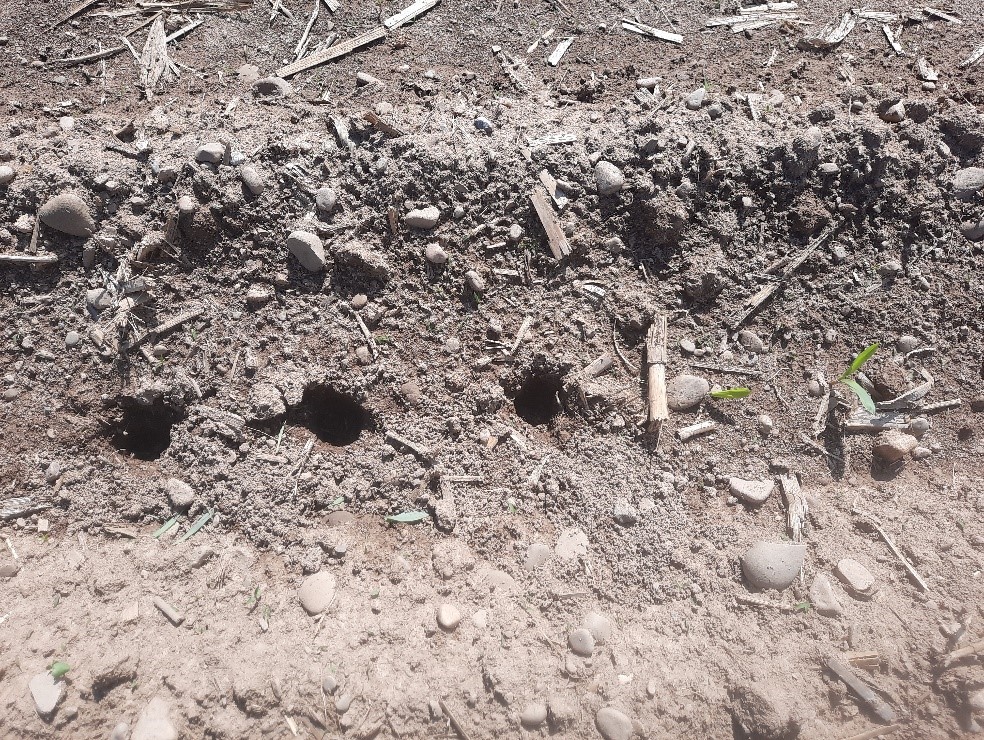
2. Growing Degree Days as of June 9th (See: Climate Smart Farming Growing Degree Day Calculator)
Growing degree days (GDD) are calculated by taking the average daily temperature and subtracting the base temperature for development of a given organism ((High + Low)/2 - base temp = GDD). For corn silage, we are using base 50/86, as corn development starts at 50 degrees F and ceases above 86. Check your location and planting date:
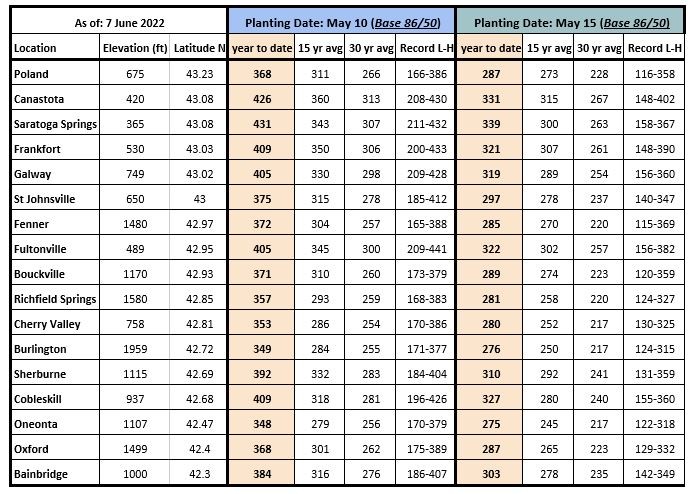
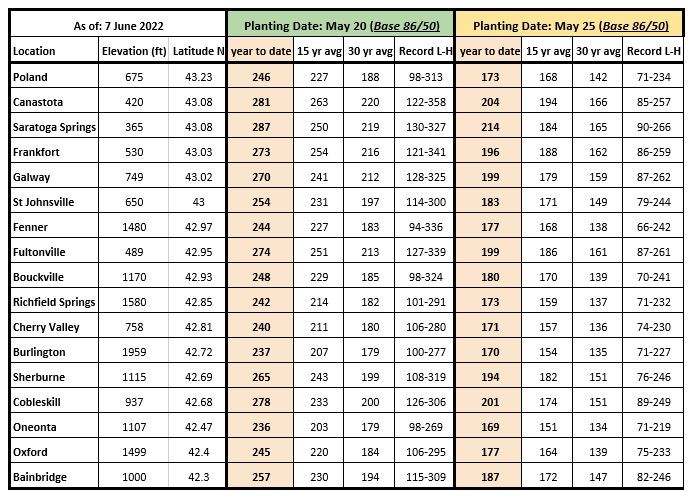
3. Pest and disease monitoring
This year we will again monitor for several pests of corn using pheromone-baited traps, including black cutworm (BCW), western bean cutworm (WBC), and true armyworm (TAW). We monitor BCW and TAW populations first, then transition to BCW and TAW through the middle part of the season, and we may eventually track fall armyworm (FAW) at some point this year as well.
This week, BCW numbers dropped, but TAW populations are showing the first signs of life. Once again, check your fields until v6 (around 12") for cutworm damage:
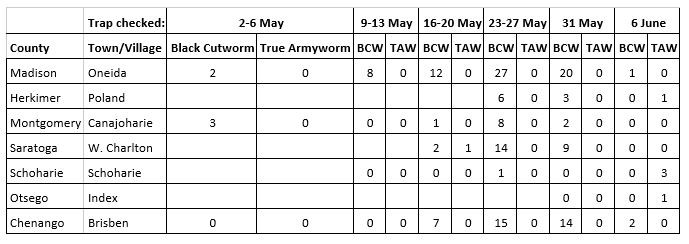
As winter grains such as barley and wheat begin to flower, now would be the time to decide whether to protect crops from fusarium head blight. According to the Fusarium Risk Tool (https://www.wheatscab.psu.edu/ ), the risk in our region is currently low, except for perhaps eastern Fulton County and east of Schoharie in the Gallupville/Berne area, where the risk is medium if your crops are currently flowering:
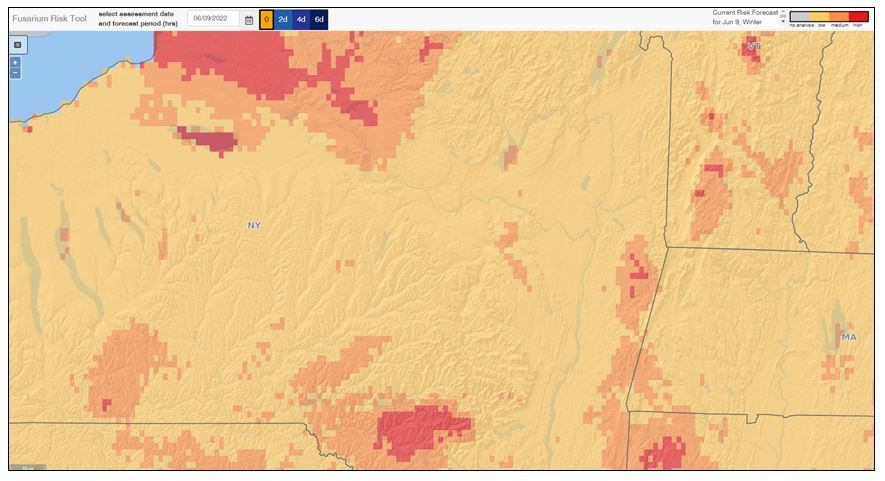
Field Crop Update June 9, 2022 (pdf; 759KB)
Upcoming Events
New York State Fiber Conference
June 9, 2024
Bouckville, NY
Theme for this year: Quality Matters
Announcements
Cash Rent and Custom Harvest Survey
To date, there is limited information available about rental rates and fees for crop harvesting. Farms can use this valuable information for their farm business planning to help improve decision making and profitability.Farmers Can Join MeatSuite For Free!
MeatSuite.com is a free resource provided by Cornell University where NY meat farmers can create a farm profile and list their bulk (wholes, halves, quarters) and bundled (i.e. Grilling Bundle) meat products.Why should farmers join?
1. It's free and easy!
2. Connect with more local customers. In the past year the MeatSuite.com farm directory had 8,300 visits from New York consumers. Farm profiles get as many as 25 views per month from potential local customers. We also spotlight MeatSuite farms on social media and bring attention and purchases to farms through highlights and giveaways.
How do I join?
Farmers can visit https://www.meatsuite.com/farmers/ to create a free farm profile. You must list at least one product for your farm's profile to go live. You'll also have access to Cornell's free Meat Price Calculator, a helpful tool for pricing your meat to make a profit.
While you're on MeatSuite, check out the "Creating Consumer-Friendly Bulk Meats" publication on the log-in page. It has tips on how to create bulk meat products that are easier for first-time buyers to say "yes" to.
If you have any questions as you create your farm profile or products, we're here to help! Please email Matt LeRoux at mnl28@cornell.edu.




